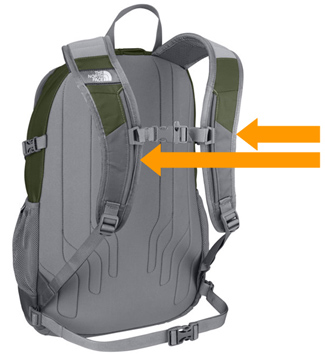By Michael T. Lagueux II, B.A., D.C.
Positive Edge Chiropractic
Scoliosis refers to a lateral or "sideways" curve in the spine, in either the shape of the letter "C" or "S". In most people it is not known what the cause is, so the name "
idiopathic scoliosis" is given. In other cases, less commonly, the cause will be something else, such as a congenital defect or a developmental abnormality. In this article, we will only be referring to the most common type, idiopathic scoliosis. Maybe you remember the scoliosis screenings that your school nurse performed while you were in elementary school? Screening large numbers of kids for scoliosis is a good strategy, since it occurs pretty sporadically in about 1.5% of the overall population. Scoliosis occurs more commonly in females, perhaps for a variety of different reasons, not very well-understood. At the present time, there isn't a perfect explanation for how or why idiopathic scoliosis occurs in the first place.
So if you've got a slight curve in your spine, what can you do? If the curve is 10 degrees or less, your medical doctor will most likely not recommend any type of treatment. If the curve is 10 degrees or more, you might be given the option to use a brace, such as the
Boston Brace or the
Milwaukee Brace. When the curve is 20 degrees or more and is likely to progress, a brace is always recommended, sometimes in conjunction with
surgery to correct the curve. When a curve is especially significant, it may eventually result in heart and lung issues for the patient, because one lung is compressed and can't fully expand. As chiropractors, however, we look at the situation a little bit differently. We know that by performing specific adjustments to the spine, we can help to realign the vertebrae and to improve the overall range of motion of the spine. We also know that since all of the
peripheral nerves exit from the spine and go to all of the different parts of the body, any interruption in this "flow" can result in a problem involving any of these different parts. So a patient with scoliosis at our office would be adjusted in such a way to correct their curve, no matter how many degrees it is. When your spine is aligned and moving properly, the nerves are able to function at their best, and therefore so are you!
At
Positive Edge Chiropractic, a patient with scoliosis would be given a program of specific stretches and
exercises designed to help correct the curve. In addition, we perform adjustments to the spine that are also geared toward correcting the curve. Patients with scoliosis (even a very minor one) generally love getting chiropractic adjustments and report that it feels good. And it makes sense, we are re-aligning the bones of the spine, helping to put them back where they should be! Of course that's got to feel pretty good! Usually after receiving an adjustment, the patient will feel an increase in range of motion and flexibility, increased energy, and an improved ability to breathe. They will also experience an improvement in their overall posture, maybe even appearing a bit taller than they did before!
How does chiropractic help? Performing specific adjustments on areas of the spine that are misaligned or don't move the way that they should is the main approach. All of the joints in the body send information about your body's position in space, called
proprioception, back to the brain. When joints of the spine are not moving properly or are misaligned, they they may send incorrect information back to the brain, or they may not send this information at all. This will almost certainly have a negative impact on that person's range of motion, coordination, posture, and it may even cause pain! At our office, we provide scoliosis patients with very specific adjustments to correct these misalignments, called subluxations. Most patients with scoliosis report that the adjustments feel great, allow them to move more freely, help correct their posture, and even have unexpected benefits such as an improved ability to breathe. If you or someone you know has a slight curve or a scoliosis, be sure to let them know how chiropractic can help!





